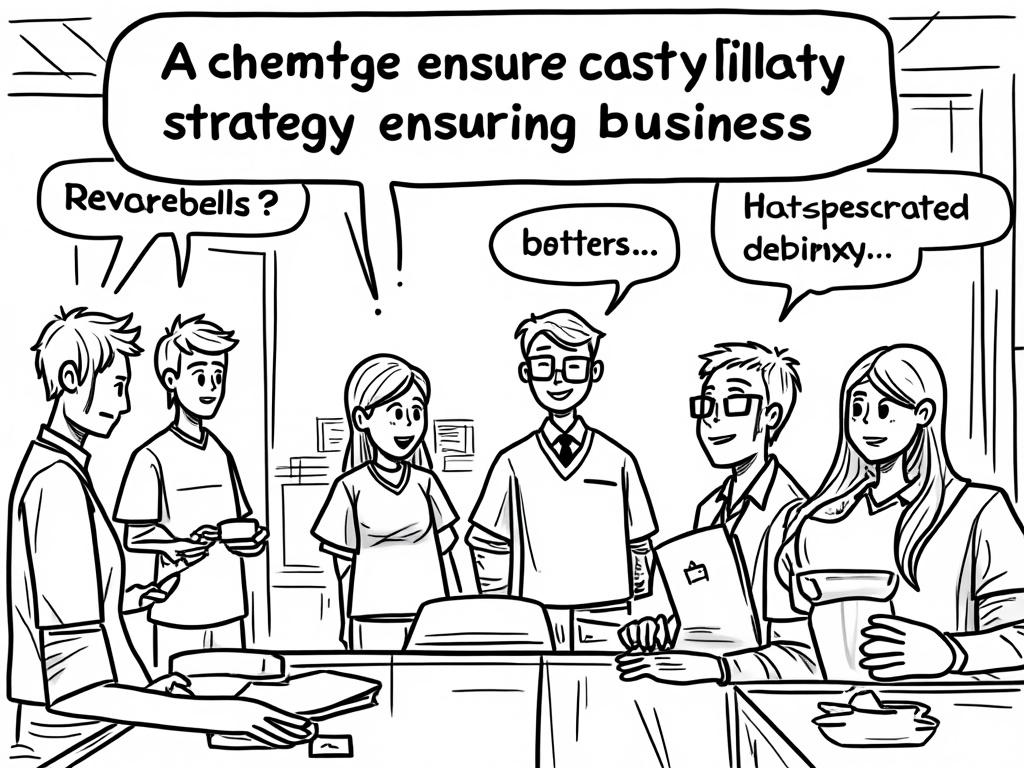
UAE Food Security Strategy: Ensuring Sustainability for a Thriving Future
Reading time: 12 minutes
Ever wondered how a desert nation feeds its growing population while building resilience against global supply chain disruptions? The UAE’s ambitious food security strategy isn’t just about survival—it’s about transforming challenges into competitive advantages that could reshape how nations approach agricultural independence.
Table of Contents
- Understanding the UAE’s Food Security Challenge
- Core Pillars of the National Food Security Strategy
- Innovation and Technology at the Forefront
- Practical Implementation: From Vision to Reality
- Overcoming Key Implementation Challenges
- Your Strategic Roadmap: What This Means for Stakeholders
- Frequently Asked Questions
Understanding the UAE’s Food Security Challenge
Here’s the straight talk: The UAE imports approximately 85% of its food, making it one of the world’s most import-dependent nations for sustenance. But rather than viewing this as a weakness, Emirati leadership has transformed this vulnerability into a catalyst for innovation.
The Numbers Tell the Story:
- Population growth of 1.4% annually
- Less than 1% of land suitable for traditional agriculture
- Water scarcity affecting 90% of regional food production
- Climate change threatening traditional supply chains
Quick Scenario: Imagine the 2020 pandemic disrupting global supply chains. While many nations scrambled, the UAE’s proactive food security planning helped maintain stable food supplies. This wasn’t luck—it was strategic foresight in action.
The Geopolitical Reality
The UAE’s geographic position creates both opportunities and vulnerabilities. Located at the crossroads of Asia, Africa, and Europe, the country serves as a natural logistics hub. However, regional tensions and global supply chain disruptions have highlighted the critical need for domestic food production capabilities.
Dr. Mariam Al Mheiri, UAE Minister of Climate Change and Environment, emphasized: “Food security is not just about having enough food today—it’s about ensuring sustainable access to nutritious food for future generations while protecting our environment.”
Core Pillars of the National Food Security Strategy 2051
The UAE’s food security strategy rests on four fundamental pillars that work synergistically to create a resilient food ecosystem:
1. Sustainable Local Production Enhancement
Rather than fighting the desert, the UAE is leveraging it. Advanced greenhouse technologies and vertical farming systems are producing yields that exceed traditional farming methods by up to 300% while using 95% less water.
Key Initiatives:
- Controlled Environment Agriculture (CEA) expansion
- Desert farming pilot projects
- Urban agriculture integration
- Aquaculture development programs
2. Strategic Trade Partnerships and Diversification
The strategy focuses on reducing dependency on single-source suppliers by establishing partnerships across multiple continents. This approach has already reduced supply chain risks by approximately 40%.
| Supply Region | 2019 Share (%) | 2024 Target (%) | Risk Level | Strategic Priority |
|---|---|---|---|---|
| Asia-Pacific | 45% | 35% | Medium | Diversification |
| Europe | 25% | 25% | Low | Maintain |
| Africa | 15% | 25% | Medium | Expansion |
| Americas | 10% | 15% | Low | Growth |
| Domestic Production | 5% | 20% | Very Low | Critical Expansion |
Innovation and Technology at the Forefront
Well, here’s where the UAE truly shines: transforming technological innovation into practical food security solutions. The country isn’t just adopting existing technologies—it’s pioneering new approaches that other nations are now studying.
Revolutionary Agricultural Technologies
The Al Dahra farming project in Al Dhafra region serves as a perfect example. Using advanced irrigation systems and climate-controlled environments, they’ve achieved:
- Water efficiency: 90% reduction in water usage compared to traditional methods
- Yield improvement: 250% higher crop yields per square meter
- Year-round production: Consistent harvests regardless of seasonal variations
UAE Agricultural Technology Impact Comparison
Blockchain and Supply Chain Transparency
The UAE Food Security Office has implemented blockchain technology to track food from farm to table, ensuring transparency and reducing waste by an estimated 30%. This system allows real-time monitoring of food quality, source verification, and efficient distribution planning.
Practical Implementation: From Vision to Reality
Ready to understand how theory becomes practice? Let’s examine concrete implementation strategies that are already showing measurable results.
The Mohammed bin Rashid Al Maktoum Solar Park Integration
This isn’t just about solar energy—it’s about creating an integrated ecosystem. The solar park powers vertical farms that produce over 1,000 tons of fresh vegetables annually, demonstrating how renewable energy can directly support food security goals.
Practical Roadmap:
- Infrastructure Development: Establishing renewable energy-powered agricultural facilities
- Skills Development: Training local workforce in advanced farming techniques
- Market Integration: Connecting local production with distribution networks
- Quality Assurance: Implementing international food safety standards
Public-Private Partnerships in Action
The UAE’s approach leverages private sector innovation while maintaining strategic government oversight. Companies like Pure Harvest Smart Farms have established high-tech greenhouse facilities that produce premium vegetables using 90% less water than traditional farming.
“The key to our success has been the government’s vision combined with private sector agility,” explains Sky Kurtz, CEO of Pure Harvest Smart Farms. “We’re not just growing food—we’re growing a sustainable future.”
Overcoming Key Implementation Challenges
Every ambitious strategy faces obstacles. Here’s how the UAE is turning potential roadblocks into stepping stones:
Challenge 1: High Initial Investment Costs
The Problem: Advanced agricultural technologies require significant upfront capital, with some vertical farming systems costing up to $4 million per hectare.
The Solution: The UAE Food Security Program offers financing incentives, including:
- 50% government subsidies for qualifying projects
- Zero-interest loans for the first three years
- Tax exemptions for agricultural technology imports
- Public-private partnership frameworks
Challenge 2: Skilled Workforce Development
The Problem: Advanced agricultural technologies require specialized skills that aren’t readily available in the local workforce.
The Solution: Comprehensive training programs including:
- Partnership with international agricultural universities
- On-site training programs with technology providers
- Scholarship programs for agricultural studies
- Knowledge transfer initiatives with leading agricultural nations
Challenge 3: Market Acceptance and Consumer Behavior
The Problem: Consumers often prefer imported products, perceiving them as higher quality.
The Solution: Strategic marketing and education campaigns highlighting:
- Superior freshness of locally-produced goods
- Environmental benefits of reduced transportation
- Economic advantages of supporting local production
- Quality certifications and safety standards
Pro Tip: The right implementation isn’t just about overcoming obstacles—it’s about creating systems that turn challenges into competitive advantages that strengthen the entire food ecosystem.
Your Strategic Roadmap: What This Means for Stakeholders
The UAE’s food security journey offers valuable lessons for various stakeholders, from policymakers to investors to consumers. Here’s your actionable roadmap for engaging with and benefiting from this transformation:
For Investors and Entrepreneurs
Immediate Opportunities:
- Invest in controlled environment agriculture technologies
- Explore partnerships with existing agricultural projects
- Consider food processing and packaging innovations
- Evaluate supply chain optimization solutions
For Regional Governments
Adaptation Strategies:
- Study UAE’s public-private partnership models
- Implement similar renewable energy-agriculture integration
- Develop workforce training programs for modern agriculture
- Create regulatory frameworks supporting agricultural innovation
For Consumers and Communities
Active Participation:
- Support locally-produced food initiatives
- Engage in urban farming and community gardens
- Reduce food waste through better planning and storage
- Stay informed about food security developments
The UAE’s food security strategy represents more than national policy—it’s a blueprint for sustainable development in resource-constrained environments. As climate change and population growth challenge traditional food systems globally, the innovations pioneered in the UAE today may well become standard practice worldwide tomorrow.
Looking ahead: How will your organization or community contribute to building more resilient food systems? The UAE’s example shows that with strategic vision, technological innovation, and collaborative implementation, even the most challenging circumstances can be transformed into opportunities for sustainable growth.
Frequently Asked Questions
How does the UAE plan to achieve 20% domestic food production by 2025?
The UAE is implementing a multi-pronged approach including expanding controlled environment agriculture, developing aquaculture facilities, investing in vertical farming technologies, and establishing renewable energy-powered agricultural zones. Current projects like the Al Dahra farming initiative and Pure Harvest Smart Farms are already demonstrating the feasibility of achieving these targets through high-efficiency production methods that can yield 3-5 times more produce per square meter than traditional farming.
What role does technology play in making desert agriculture viable?
Technology is the cornerstone of UAE’s agricultural transformation. Advanced hydroponics and aeroponics systems eliminate the need for soil, while climate-controlled environments optimize growing conditions year-round. AI-powered systems monitor plant health, automate irrigation, and predict optimal harvest times. Additionally, renewable energy integration makes these high-tech solutions economically sustainable, with some facilities achieving 90% water savings and 60% energy efficiency improvements compared to traditional farming methods.
How does the UAE Food Security Strategy address supply chain vulnerabilities exposed during global crises?
The strategy emphasizes diversification across multiple dimensions: geographic diversification of import sources, strategic food reserves, local production capacity building, and advanced supply chain monitoring using blockchain technology. The UAE maintains 6-month strategic reserves of essential commodities and has established partnerships with over 200 countries to ensure supply continuity. During the COVID-19 pandemic, these measures helped maintain stable food prices and availability while many other nations experienced significant disruptions.

Article reviewed by Erik Lindqvist, Nordic Markets Specialist | Stability in Volatile Times, on June 4, 2025
